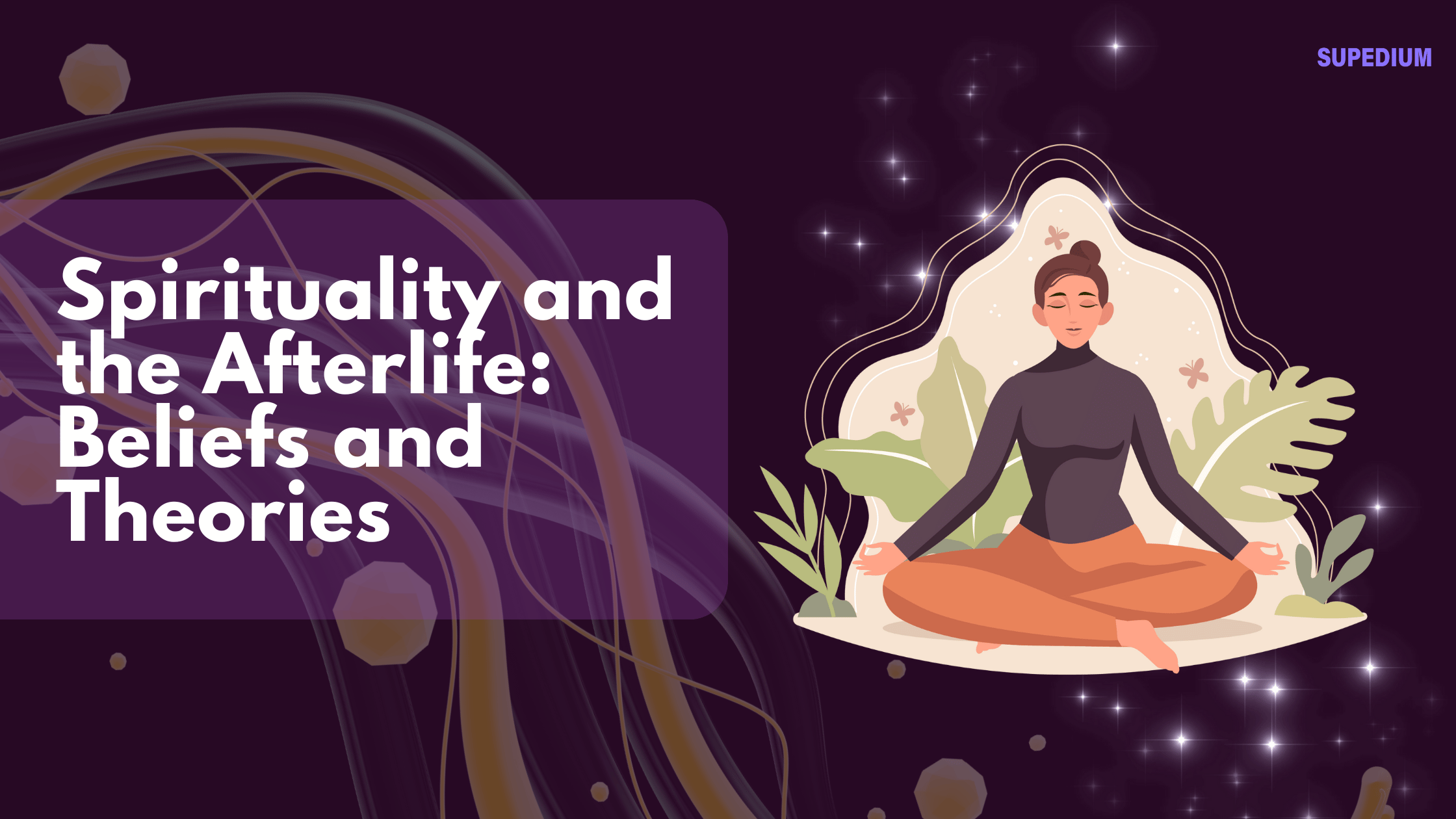Table of Contents
![]()
Introduction
Spirituality, a term often associated with the search for meaning and connection beyond the physical world, extends into diverse beliefs about the afterlife. While spirituality is distinct from organized religion, it encompasses a wide range of beliefs concerning what happens after death. This article delves into historical, cultural, and modern perspectives on the afterlife, exploring various theories and their implications for spiritual practices and personal beliefs.
Historical and Cultural Perspectives on the Afterlife
Ancient Civilizations
In ancient Egypt, the concept of the afterlife was intricately linked to the idea of the soul’s immortality. Egyptians believed in an eternal existence after death, with the soul undergoing a series of judgments and trials. The mummification process and the Book of the Dead were vital in preparing the deceased for their journey to the afterlife, where they would seek entry into the Field of Reeds, a paradise akin to their earthly existence.
In Mesopotamia, the afterlife was perceived as a dreary underworld. The Sumerians and Babylonians envisioned a shadowy realm where all souls, regardless of their earthly deeds, ended up. This view emphasized a more somber afterlife compared to the more optimistic Egyptian beliefs.
Greek and Roman cultures offered a range of views on the afterlife. The Greeks believed in Hades, a realm of the dead, which included both a paradise known as Elysium and a dreary place for souls who had led unjust lives. Philosophers like Plato posited ideas of the soul’s immortality and its journey through successive lives, while Aristotle’s views were less focused on the afterlife, emphasizing a more naturalistic approach to existence.
Eastern Religions
In Hinduism, the afterlife is deeply connected to the concepts of karma and reincarnation. Hindus believe that the soul (Atman) undergoes a cycle of birth, death, and rebirth (Samsara) until it achieves liberation (moksha) and reunites with the ultimate reality (Brahman). This cycle reflects the moral quality of one’s actions, which dictate the nature of subsequent rebirths.
Buddhism also centers on the cycle of rebirth, known as Samsara, but with the ultimate goal of attaining Nirvana—a state of liberation from the cycle of suffering and rebirth. Nirvana represents the cessation of all desires and attachments, offering an escape from the perpetual cycle of rebirth.
Daoism presents a unique view of the afterlife, focusing on the concept of spiritual immortality. The Dao, an underlying principle that governs the universe, is central to Daoist thought. Spiritual immortality is achieved through harmonizing with the Dao, embodying balance and eternal flow, rather than through a specific afterlife destination.
Indigenous and Tribal Beliefs
Native American traditions often emphasize a connection between the living and the spirit world. Many tribes believe in an afterlife where spirits continue to exist and interact with the living. Rituals and ceremonies, such as the vision quest or sweat lodge, serve to connect individuals with the spirit world and their ancestors.
African Traditional Religions typically hold that ancestors play a significant role in the afterlife. The deceased are believed to join the ancestral realm, where they continue to influence the living through spiritual guidance and protection. Rituals and community practices are vital in maintaining this connection and honoring the ancestors.
Major World Religions and Their Views on the Afterlife
Christianity
Christian views on the afterlife are primarily shaped by the concepts of Heaven and Hell. Christianity generally teaches that after death, individuals face judgment and are either rewarded with eternal life in Heaven or punished in Hell based on their faith and actions. Variations exist among denominations, with some emphasizing a more symbolic interpretation of these concepts, while others adhere to literal understandings.
Islam
In Islam, the afterlife consists of Jannah (Paradise) and Jahannam (Hell). Muslims believe in a Day of Judgment when all individuals will be resurrected and judged by Allah. Those who have lived righteously and followed Islamic teachings will enter Jannah, while those who have led sinful lives will be cast into Jahannam. This belief underscores the importance of moral conduct and religious devotion in Islamic faith.
Judaism
Judaism encompasses a range of beliefs regarding the afterlife. Traditional views include Sheol, a shadowy realm where all souls go after death. More contemporary beliefs focus on Olam Ha-Ba (the World to Come), which can signify both a physical resurrection and a spiritual existence. Views vary among Orthodox, Conservative, and Reform Jews, reflecting a spectrum of beliefs from a physical resurrection to more metaphorical interpretations of afterlife concepts.
Sikhism
In Sikhism, the afterlife is closely linked to the concept of reincarnation. Sikhs believe in the cycle of birth and rebirth and the possibility of achieving liberation (Mukti) through God’s grace. The ultimate goal is to reunite with God and attain a state of spiritual liberation, transcending the cycle of rebirth.
Modern Spiritual and Secular Perspectives
New Age Spirituality
New Age spirituality often incorporates beliefs in reincarnation and past-life regression. Proponents believe that individuals undergo multiple lifetimes to learn and grow spiritually. The focus is on spiritual evolution, cosmic consciousness, and personal transformation, reflecting a holistic approach to the afterlife.
Secular and Humanist Views
From a secular standpoint, beliefs about the afterlife vary widely, often focusing on the legacy and impact one leaves behind rather than a literal continuation of existence. Humanists, who generally reject supernatural beliefs, may emphasize the importance of living a meaningful life in the here and now rather than speculating about an afterlife.
Scientific Perspectives
Scientific investigations into the afterlife include studies of near-death experiences (NDEs). Some researchers explore whether these experiences suggest a continuation of consciousness beyond death. Additionally, scientific discussions about consciousness and the brain’s role in such experiences contribute to the ongoing debate about the nature of the afterlife.
Comparative Analysis of Afterlife Beliefs
Common Themes and Divergences
Across various belief systems, common themes include the ideas of judgment, reward, punishment, and spiritual evolution. While some traditions focus on the moral quality of one’s life determining their afterlife experience, others emphasize spiritual growth or cosmic harmony. Divergences often lie in the specifics of these experiences and the mechanisms of achieving them.
Influence on Moral and Ethical Behavior
Beliefs about the afterlife significantly influence moral and ethical behavior. In many cultures, the promise of reward or fear of punishment in the afterlife encourages adherence to moral codes. These beliefs shape societal norms and individual actions, highlighting the profound impact of afterlife concepts on ethical decision-making.
Interactions Between Different Belief Systems
The globalization of spiritual beliefs has led to increased interactions and syncretism between different traditions. As cultures and religions intersect, there is often a blending of afterlife concepts, reflecting a more diverse and integrated approach to understanding existence beyond death.
Implications for Personal and Societal Practices
Rituals and Practices Related to the Afterlife
Rituals associated with the afterlife, such as funerary practices and spiritual ceremonies, play a crucial role in various cultures. These practices help individuals cope with death, honor the deceased, and maintain connections with the spirit world or ancestral realms.
Impact on Mental Health and Well-being
Beliefs about the afterlife can offer comfort and meaning, especially in the face of death and loss. Spirituality often provides a framework for understanding mortality, influencing how individuals process grief and seek solace.
Future Directions and Evolving Beliefs
Advancements in technology and shifts in cultural perspectives may influence future beliefs about the afterlife. Emerging trends in spirituality and science could shape new understandings and practices, reflecting ongoing human curiosity and the quest for meaning.
Conclusion
The exploration of spirituality and the afterlife reveals a rich tapestry of beliefs and theories that reflect humanity’s diverse perspectives on existence beyond death. From ancient traditions to modern interpretations, the quest to understand what lies beyond life continues to shape spiritual practices and personal beliefs. As we navigate these varied perspectives, the continuing search for meaning highlights the enduring significance of spirituality in human life.
Share This





Be the first to comment